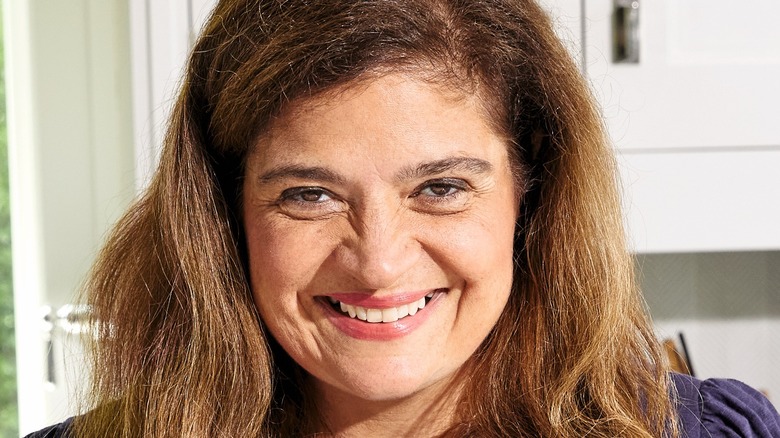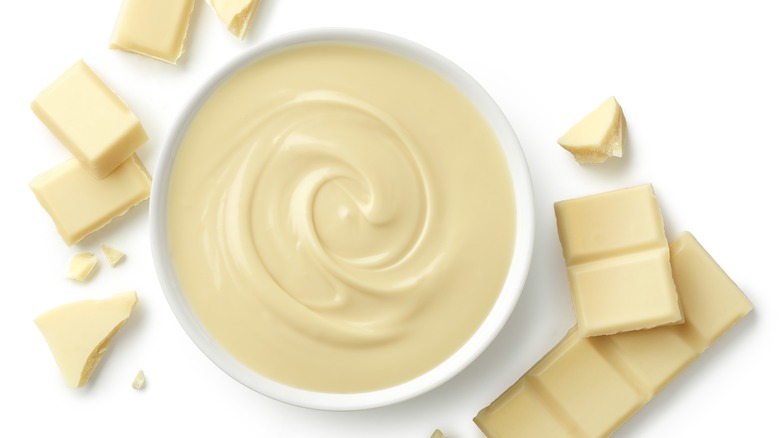The White Chocolate You Should Be Buying, According To Alex Guarnaschelli - Exclusive
White chocolate is notoriously difficult to work with, known for seizing if it gets too warm or melting too quickly. It's easy to find yourself with a lumpy mess. But don't get discouraged — Chef Alex Guarnaschelli says this often has less to do with you and more to do with the white chocolate you're buying.
In an exclusive interview with Tasting Table, she explained, "Cutting white chocolate from a block or a bar instead of buying the more processed chips can create a good insurance policy." But the quality of that bar matters. Despite a bad reputation as "not real chocolate," white chocolate is made from the cocoa bean — instead of being made with the dark solids, it comes from the cocoa butter, which gives it an ultra-smooth, silky, creamy taste and consistency. Unfortunately, a lot of chocolate brands add in fillers during processing, creating a low-quality bar.
To avoid this low-quality chocolate, Guarnaschelli advised, "Go to your baking aisle as opposed to going to the counter where the candy bars and stuff are. Look at your baking aisle, and that's probably where you're going to find the better stuff." While the brand is not what is important, getting a higher-quality bar meant for baking will lead to better results. Just be sure to avoid white "flavored" items, which may not contain any cocoa butter at all. To drive the point home, Guarnaschelli commented, "If you need to skimp, probably safer to use dark chocolate."
Guarnaschelli's tips for working with white chocolate
Once you have your high-quality white chocolate, the hard part isn't quite finished — it's time to get to work. To make the most of your bar, Alex Guarnaschelli gave us a few tips about how to handle it, starting with the most important: "Don't overheat it." She also advised thinking about what you're adding to your white chocolate. "Know that it's got a ton of cocoa butter in it," she said. "It's high fat, so if you're adding other fats to it, like cream or butter or milk, think about that for a minute."
In addition to not overheating your chocolate, it's important that you do not combine extreme temperatures of any kind. "You don't want to add ice-cold cream to warm white chocolate. You want to keep temperatures similar," Guarnaschelli noted. "Also, if you're melting the chocolate and adding things to it to make, for example, a ganache, [it] will be glossier as a result." When you get higher-quality ingredients and treat them gently, your white chocolate will mix much better and produce a far more consistent result. You may not be able to control everything in the kitchen, but with the right ingredients and an awareness of temperature, your white chocolate creations will be better set up for success.

